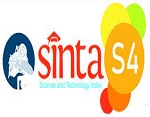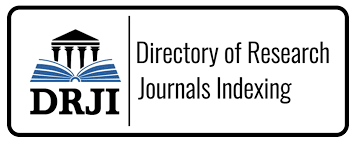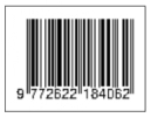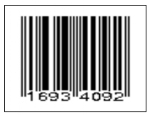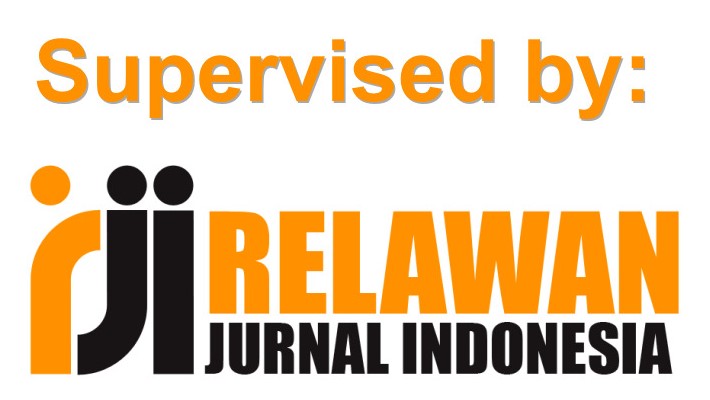Studi Daya Saing Komoditas Unggulan Karet, Kopi, dan Kelapa Sawit di Sumatera Selatan: Pendekatan Revealed Comparative Advantage (RCA)
DOI:
https://doi.org/10.31851/jmwe.v22i3.20278Abstract
ABSTRAK
Sektor industri memiliki peran yang cukup besar dalam mendorong pertumbuhan ekonomi di Sumatera Selatan karena kemampuannya dalam menciptakan nilai tambah yang tinggi. Industri juga dapat membuka kesempatan untuk menciptakan dan memperluas lapangan pekerjaan sekaligus mengurangi angka pengangguran, yang berarti meningkatkan kesejahteraan serta mengurangi kemiskinan. Tujuan penelitian ini untuk mengetahui tingkat daya saing komoditas unggulan karet, kopi, dan kelapa sawit di Sumatera Selatan. Penelitian ini merupakan penelitian deskriptif kualitatatif. Data dalam penelitian ini adalah data yang diperoleh langsung melalui studi dokumentasi. Metode analisis yang digunakan dalam penelitian ini adalah metode penelitian deskriptif kualitatif dengan pendekatan analisis L dan RCA. Sumber data diperoleh dari Badan Pusat Statistik (BPS) tahun 2023. Penelitian ini menunjukkan hasil bahwa berdasarkan analisis dan perhitungan nilai RCA yang telah dilakukan, dapat disimpulkan bahwa komoditas karet, kopi, dan kelapa sawit di Sumatera Selatan memiliki karakteristik daya saing yang berbeda. Karet menunjukkan daya saing yang sangat tinggi dengan nilai RCA yang stabil dan terus mendominasi pasar global, menjadikannya sebagai komoditas unggulan yang harus terus diperkuat melalui pengelolaan yang efisien dan peningkatan standar ekspor. Kopi, meskipun memiliki potensi besar, mengalami penurunan daya saing yang signifikan dalam beberapa tahun terakhir, yang mengindikasikan perlunya intervensi strategis untuk meningkatkan kualitas dan akses pasar. Kelapa sawit, meskipun menunjukkan potensi yang moderat, tetap menghadapi tantangan dalam mengoptimalkan produksi dan memenuhi kebutuhan pasar global.
Kata Kunci: Komoditas, Unggulan, RCA, Daya, Saing.
ABSTRACT
The industrial sector has a significant role in driving economic growth in South Sumatra because of its ability to create added value. Economic growth in South Sumatra because of its ability to create high value added. The industry can also open up opportunities to create and jobs while reducing unemployment, which means improving welfare and reducing poverty improve welfare and reduce poverty. The purpose of this study to determine the level of competitiveness of superior commodities of rubber, coffee, and oil palm in South Sumatra. This research is a descriptive qualitative research.The data in this study are data obtained directly through documentation studies. The analysis method used in this research is the method of qualitative descriptive research method with L and RCA analysis approach. The source of data is obtained from the Central Bureau of Statistics (BPS) year 2023.This research shows the results that based on analysis and calculation of the RCA value that has been done, it can be concluded that the rubber, coffee, and oil palm commodities in that rubber, coffee, and oil palm commodities in South Sumatra have different competitive characteristics different competitiveness characteristics. Rubber shows very high competitiveness with a stable RCA value and continues to dominate the global market, making it a leading commodity that must continue to be strengthened through the development of as a superior commodity that must continue to be strengthened through efficient management and improved export standards efficient management and improved export standards. Coffee, despite its great potential, has experienced a significant decline in competitiveness in recent years, indicating the need for strategic interventions to improve quality and market access and market access. Oil palm, despite showing moderate potential, continues to face challenges in optimizing production and meeting market demand challenges in optimizing production and meeting global market needs Global
Keywords : Comodity, Excellence, RCA, Competitiveness.
References
Arikunto, Suharsimi. (2006). Prosedur Penelitian Suatu Pendekatan Praktik. Jakarta : Rineka Cipta.
Depdiknas. (2003). Tingkat Kesegaran Jasmani Indonesia. Jakarta, Indonesia : Pusat Pengembangan Kualitas Jasmani.
Djoko Pekik Irianto. (2004). Bugar dan Sehat Dengan Berolahraga. Yogyakarta, Indonesia : Andi Offset.
Djoko Pekik Irianto. (2000). Panduan latihan kesegaran yang efektif dan aman. Yogyakarta, Indonesia : Lukman Offset.
Herman Subarjah dan Iwan Setiawan. (2003). Korelasi antara kesegaran jasmani dan keterampilan teknis terhadap prestasi berbanding pada atlet bulutangkis yunior di pelatda bulutangkis jawa barat. Jurnal Nasional Pendidikan Jasmani dan Ilmu Keolahragaan. 2 (1). Hlm. 22-30.
Kadir, et.al (2018). The Impact of Physical and Human Capital on The Economic Growth of Agriculture Sector in South Sumatera. International Journal of Economics and Financial Issues. 8(4).
Kadir et.al (2018). The Development of Rubber, Coffee and Palm Oil Commodity in South Sumatra, Indonesia using SWOT Analysis. International Journal of Environment, Agriculture and Biotechnology. 3(4).
Muhyiddin, Nurlina T., M. Irfan Tarmizi, dan Anna Yulianita. Metode Penelitian Ekonomi & Sosial: Teori, Konsep, dan Rencana Proposal. Jakarta: Salemba Empat, 2017.
Novalia, Nurkardina (2019). Escalation Small Scale Industry in Supporting Economic Growth in Indonesia, Journal of Research in Business, Economics and Management, Volume 12, Issue 1, January 30, 2019
Novalia, Nurkardina (2015). Analisis Daya Saing Industri Manufaktur Indonesia dan Negara-Negara ASEAN, Prosiding Sriwijaya Economics and Business Conference: “Competitiveness and Government Incentive to take Advantage of Global Economics Opportunities”.
Sepdanius E, Rifki M.S, Komaini A. (2019). Tes dan Pengukuran Olahraga. Depok, Indonesia : PT Raja Grafindo Persada.
Downloads
Published
Issue
Section
License
Copyright (c) 2025 Jurnal Media Wahana Ekonomika

This work is licensed under a Creative Commons Attribution-NonCommercial 4.0 International License.
The copyright of the received article shall be assigned to the publisher of the journal licensed under a Creative Commons Attribution-NonCommercial 4.0 International License in line with the license, authors and any users (readers and other researchers) are allowed to share and adapt the material only for non-commercial purposes. In addition, the material must be given appropriate credit, provided with a link to the license, and indicated if changes were made. If authors remix, transform or build upon the material, authors must distribute their contributions under the same license as the original.


